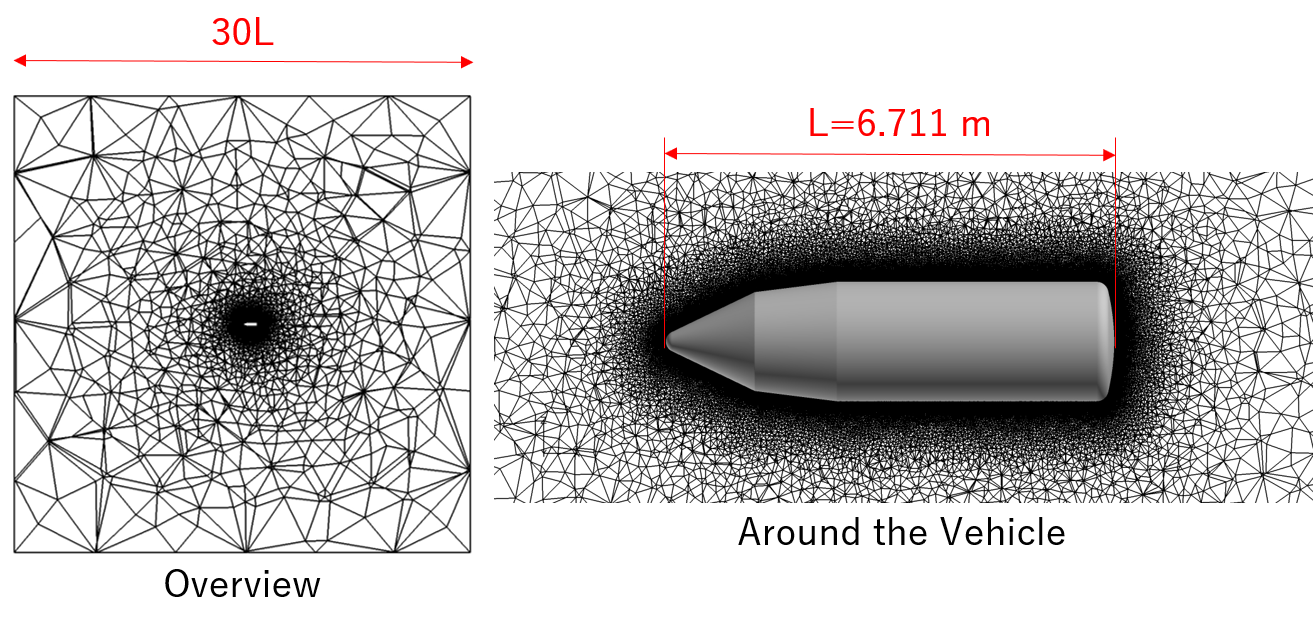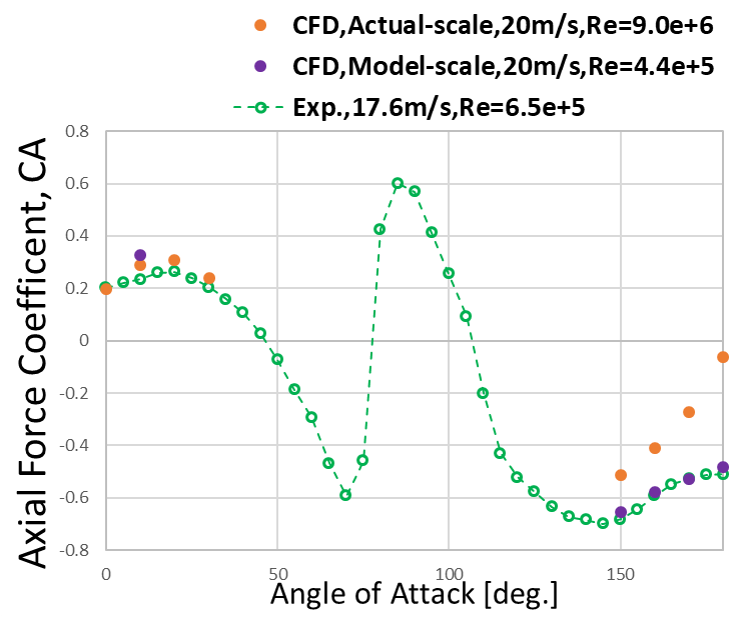Computational Study on Aerodynamic Characteristics of Reusable Slender Body Configurations
JAXA Supercomputer System Annual Report April 2020-March 2021
Report Number: R20EACA12
Subject Category: JSS Inter-University Research
- Responsible Representative: Keiichi Kitamura, Associate Professor, Yokohama National University
- Contact Information: Tomohiro Mamashita(mamashita-tomohiro-nj@ynu.jp)
- Members: Keiichi Kitamura, Tomohiro Mamashita
Abstract
In this study, we are attempting to predict the aerodynamic characteristics of the reusable experimental vehicle "RV-X" with a two-stage cone by both wind tunnel tests and numerical analysis in preparation for its flight test. In the previous study, the validity of the numerical analysis was confirmed by comparison with the results of wind tunnel tests, and the flow field around the test model was clarified. In this study, as the next step, numerical analysis has been conducted for the actual size to be tested in flight, and the aerodynamic characteristics of the aircraft have been predicted. In addition, the aerodynamic characteristics of the test model have been compared with those of the actual size, and the differences between the actual size and the model have been discussed.
Reference URL
N/A
Reasons and benefits of using JAXA Supercomputer System
Objective: To clarify the mechanism of the difference between a wind tunnel test model and an actual vehicle for a slender object such as a reusable rocket, and to provide knowledge for actual flight.
Necessity: In numerical analysis on the scale of actual vehicles with large Reynolds numbers, the number of grid points required to properly resolve the boundary layer also increases. Therefore, large-scale parallel computation is indispensable to reduce the huge computation time.
Application: JSS2 and JSS3 have been used because it is necessary to significantly reduce the computation time for large-scale calculations.
Achievements of the Year
Numerical analysis has been conducted on an actual scale to simulate the flight test of the experimental reusable rocket vehicle RV-X. Fig. 1 shows the mesh configuration. Fig. 2 shows the graphs of the axial force coefficients of the wind tunnel test, the numerical analysis of the model scale, and the numerical analysis of the actual scale. The difference between the actual scale and the model scale is especially large at an angle of attack of 150-180 degrees. This suggests that the aerodynamic deceleration effect is smaller than expected during the return phase of the reusable experimental aircraft (actual scale).The reason for this is that the difference in Reynolds number affects the ease of flow separation. Fig. 3 and Fig. 4 show the visualization of the flow field of the model scale and the actual scale at an angle of attack of 180 degrees. From these figures, it has been found that the flow field in the model scale is largely detached at the base of the vehicle, while it is not detached in the actual scale. This has indicated that a strong low-pressure region is formed on the surface of the actual scale vehicle, and the force acts in the direction to cancel the original axial force.

Fig.3: Distributions of Mach Number and Surface Pressure of Model Scale at 180 degrees Angle of Attack.

Fig.4: Distributions of Mach Number and Surface Pressure of Actual Scale at 180 degrees Angle of Attack.
Publications
N/A
Usage of JSS
Computational Information
- Process Parallelization Methods: MPI
- Thread Parallelization Methods: N/A
- Number of Processes: 512 - 4096
- Elapsed Time per Case: 100 Hour(s)
Resources Used(JSS2)
Fraction of Usage in Total Resources*1(%): 0.28
Details
Please refer to System Configuration of JSS2 for the system configuration and major specifications of JSS2.
| System Name | Amount of Core Time(core x hours) | Fraction of Usage*2(%) |
|---|---|---|
| SORA-MA | 1,317,030.97 | 0.25 |
| SORA-PP | 30,222.24 | 0.24 |
| SORA-LM | 5,232.99 | 3.07 |
| SORA-TPP | 0.00 | 0.00 |
| File System Name | Storage Assigned(GiB) | Fraction of Usage*2(%) |
|---|---|---|
| /home | 240.33 | 0.22 |
| /data | 4,901.89 | 0.09 |
| /ltmp | 1,367.19 | 0.12 |
| Archiver Name | Storage Used(TiB) | Fraction of Usage*2(%) |
|---|---|---|
| J-SPACE | 0.00 | 0.00 |
*1: Fraction of Usage in Total Resources: Weighted average of three resource types (Computing, File System, and Archiver).
*2: Fraction of Usage:Percentage of usage relative to each resource used in one year.
Resources Used(JSS3)
Fraction of Usage in Total Resources*1(%): 0.16
Details
Please refer to System Configuration of JSS3 for the system configuration and major specifications of JSS3.
| System Name | Amount of Core Time(core x hours) | Fraction of Usage*2(%) |
|---|---|---|
| TOKI-SORA | 752,366.93 | 0.16 |
| TOKI-RURI | 27,226.14 | 0.16 |
| TOKI-TRURI | 0.00 | 0.00 |
| File System Name | Storage Assigned(GiB) | Fraction of Usage*2(%) |
|---|---|---|
| /home | 240.33 | 0.16 |
| /data | 4,901.89 | 0.08 |
| /ssd | 66.76 | 0.03 |
| Archiver Name | Storage Used(TiB) | Fraction of Usage*2(%) |
|---|---|---|
| J-SPACE | 0.00 | 0.00 |
*1: Fraction of Usage in Total Resources: Weighted average of three resource types (Computing, File System, and Archiver).
*2: Fraction of Usage:Percentage of usage relative to each resource used in one year.
JAXA Supercomputer System Annual Report April 2020-March 2021




